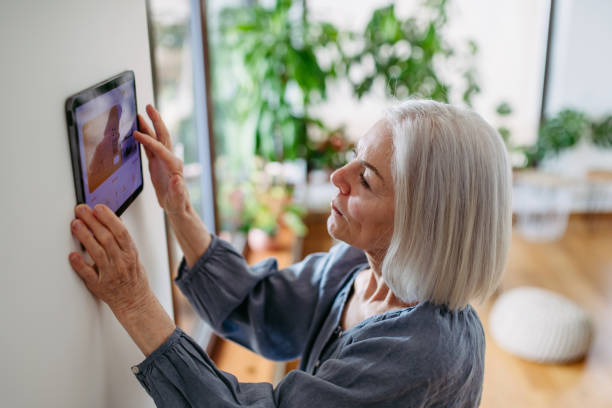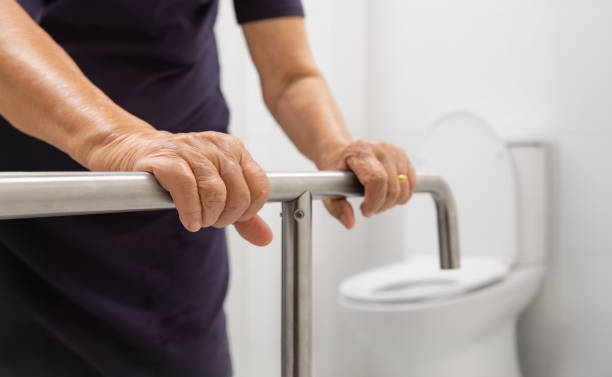As people age, many prefer to remain in their own homes rather than move to assisted living or nursing facilities. This concept, known as “aging in place,” allows individuals to maintain their independence, comfort, and familiarity with their surroundings. However, adapting a home to support aging in place requires thoughtful modifications that enhance safety, accessibility, and convenience. Whether for yourself, a family member, or a client, understanding how to make a home more age-friendly is essential for long-term well-being.
Contents
- 1 Understanding the Needs of Aging in Place
- 2 Essential Home Modifications for Aging in Place
- 2.1 1. Making Entryways and Exits Accessible
- 2.2 2. Creating a Safer Living Room and Common Areas
- 2.3 3. Adapting Kitchens for Functionality
- 2.4 4. Enhancing Bathroom Safety
- 2.5 5. Improving Bedroom Accessibility
- 2.6 6. Upgrading Staircases and Hallways
- 2.7 7. Enhancing Lighting and Visibility
- 2.8 8. Smart Home Technology for Aging in Place
- 2.9 9. Outdoor Safety and Accessibility
- 3 Financial Considerations and Support
- 4 Planning for Future Needs
- 5 Conclusion
Understanding the Needs of Aging in Place
Aging comes with physical, cognitive, and sensory changes that can impact daily activities. Reduced mobility, decreased vision, limited strength, and balance issues can make certain household tasks challenging and even hazardous. Designing a home with these changes in mind can prevent falls, injuries, and other risks, ultimately promoting a higher quality of life.
The key considerations for an age-friendly home include:
- Minimizing fall risks by eliminating hazards and improving accessibility
- Enhancing mobility with assistive devices and modifications
- Improving convenience to reduce physical strain and effort
- Increasing safety and security through smart technology and emergency preparedness
Essential Home Modifications for Aging in Place
1. Making Entryways and Exits Accessible
The front entrance of a home should be easily accessible to individuals with mobility limitations. This includes installing ramps instead of stairs, widening doorways to accommodate wheelchairs or walkers, and using lever-style door handles instead of knobs for easier grip. Well-lit pathways and sturdy railings also help prevent accidents.
2. Creating a Safer Living Room and Common Areas
The living room and common spaces should have enough open space for easy navigation. Remove unnecessary furniture, secure rugs to prevent slipping, and ensure there is ample lighting. Smart home devices, such as voice-activated lighting and automated blinds, can add convenience without requiring physical effort.
3. Adapting Kitchens for Functionality
The kitchen is a crucial space that should be designed for efficiency and ease of use. Lower countertops and cabinets ensure that frequently used items are within reach, reducing the need for excessive bending or stretching. Pull-out shelves, touch-activated faucets, and induction cooktops can enhance safety and accessibility. Non-slip flooring is also an essential upgrade to prevent falls.
4. Enhancing Bathroom Safety
Bathrooms pose one of the highest risks for falls, making modifications necessary for aging in place. Installing grab bars near the toilet and in the shower, using a walk-in bathtub or roll-in shower, and placing non-slip mats can significantly improve safety. A raised toilet seat and handheld showerhead also make it convenient for individuals with mobility limitations.
5. Improving Bedroom Accessibility
The bedroom should be a comfortable and easily accessible space. Adjustable beds, nightstands with easy-to-reach storage, and bedside lighting with motion sensors help create a safer environment. Closet modifications, such as lower hanging rods and pull-out shelves, also improve usability.
6. Upgrading Staircases and Hallways
For multi-story homes, stair safety is a major concern. Installing a stair lift or home elevator can provide long-term solutions. Handrails on both sides of staircases, non-slip treads, and adequate lighting help reduce fall risks. Clear pathways and bright lighting in hallways contribute to better mobility and security.
7. Enhancing Lighting and Visibility
As vision declines with age, proper lighting becomes even more critical. Bright, well-distributed lighting in all rooms, hallways, and entryways can prevent accidents. Motion-sensor lights, smart bulbs, and under-cabinet lighting are excellent additions that enhance visibility without requiring manual operation.
8. Smart Home Technology for Aging in Place

Technology can provide significant assistance in making homes more senior-friendly. Smart home systems allow voice or app-controlled lighting, temperature, and security adjustments. Emergency alert systems, automated medication dispensers, and video doorbells can enhance safety and peace of mind for both seniors and their caregivers.
9. Outdoor Safety and Accessibility
Outdoor spaces should also be adapted for safety and ease of use. Non-slip walkways, proper lighting, and sturdy seating areas ensure that outdoor areas remain accessible and enjoyable. Raised garden beds can allow gardening without the need for excessive bending.
Financial Considerations and Support
Modifying a home for aging in place can be an investment, but several financial resources can help. Some government programs, insurance policies, and nonprofit organizations offer grants or loans to assist with home modifications. Consulting with an occupational therapist or home modification specialist can help determine the most cost-effective changes that provide the highest impact.
Planning for Future Needs
While making home modifications, it’s essential to think ahead. Aging is a gradual process, and an individual’s needs may change over time. Planning for future mobility changes, cognitive decline, or increased medical needs ensures that the home remains functional and comfortable for years to come. Flexible home designs, such as open floor plans, easily adjustable furniture, and universal design principles, make long-term living more manageable.
Conclusion
Aging in place offers seniors the opportunity to maintain their independence and live comfortably in familiar surroundings. By making thoughtful modifications to the home, individuals can significantly improve safety, accessibility, and convenience. From simple changes like improved lighting and grab bars to advanced solutions such as smart technology and home automation, adapting a home for aging ensures a higher quality of life and peace of mind for seniors and their families.
